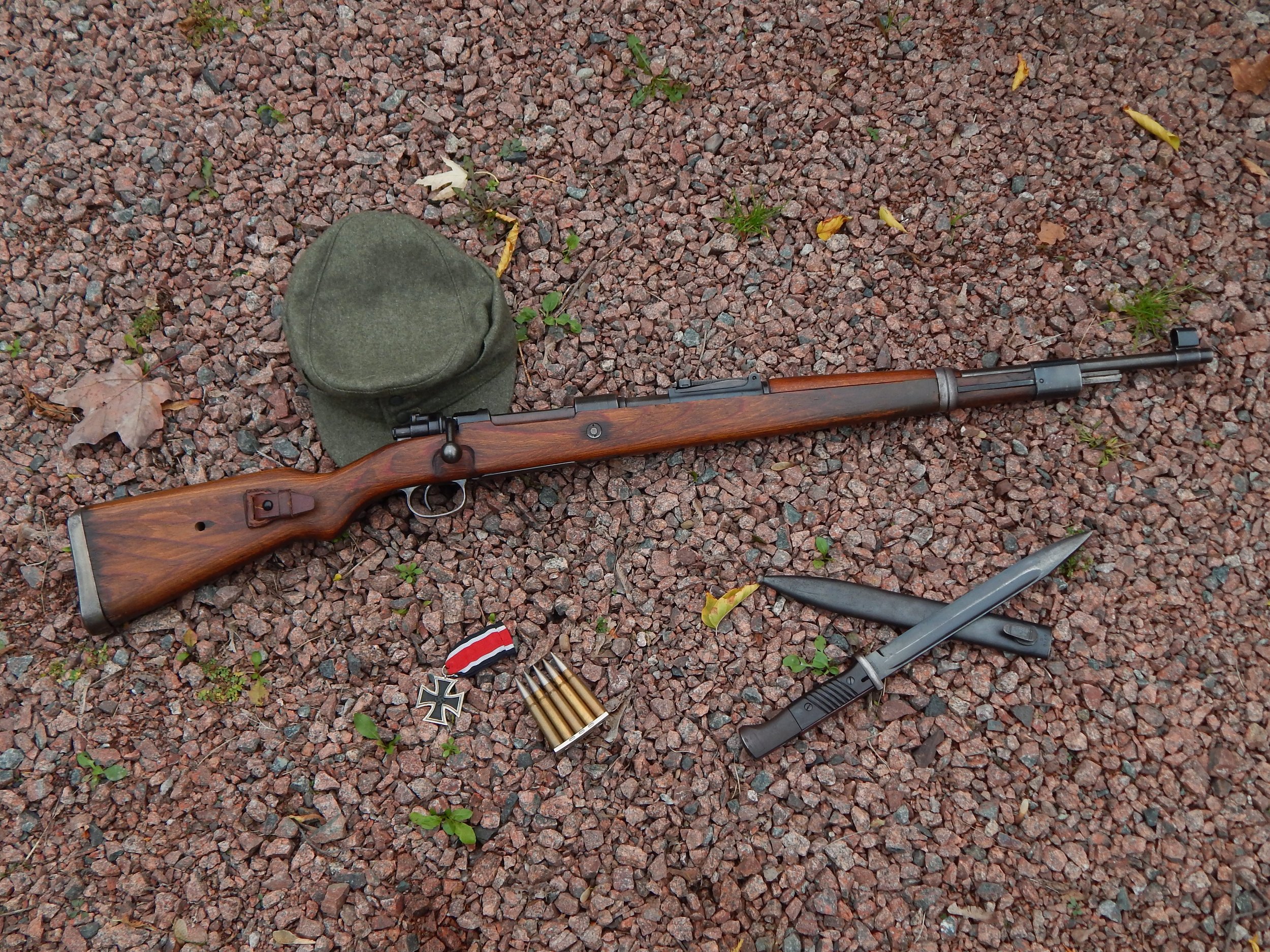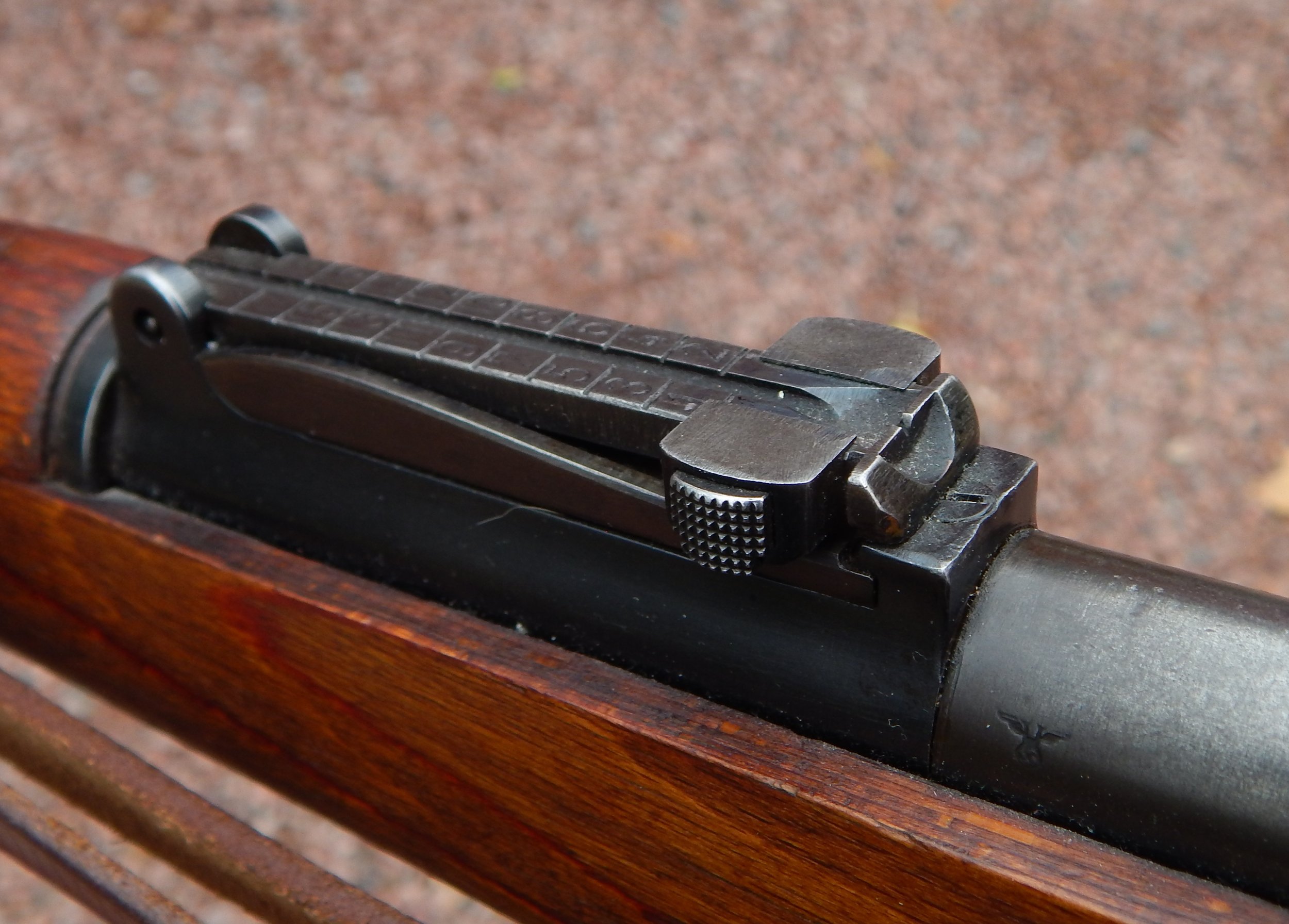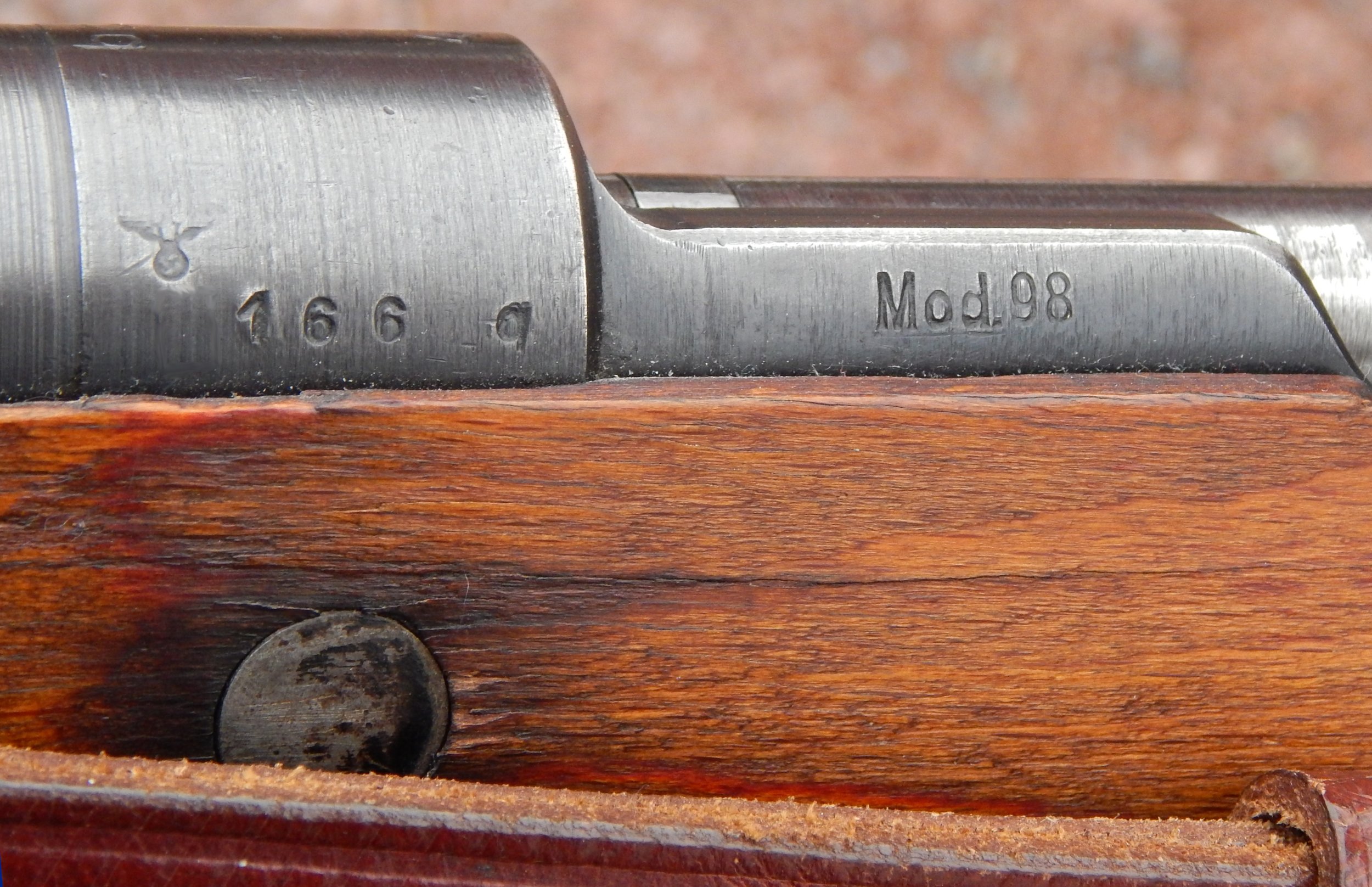Kar98k
The Gewehr 98 had served the Imperial Army well in the Great War, but was showing its age by the 1930s. This would lead to a program of modernization, and its product would become the standard service weapon of the Wehrmacht in the Second World War.
The History
The Mauser 98 had proven itself in the battlefields of the Great War, where it had served the Imperial German Army in everything from the muddy trenches of the Western Front, the frozen peaks of the Alps, the sands of the Sinai and the Russian steppes. The Gewehr 98 had performed admirably but certain improvements were desired, which led to three models in 1924, which were all nearly identical and would serve as one of the most common arms around the world in the interwar period. These models would be the M1924 from FN, the VZ24 from Czechoslovakia and the Standard Modell from Germany, and were produced in the millions and would see service with armies on every continent.
The Kar98k rear sight is a simple leaf, adjustable from 100 to 2,000 meters
As the German Republic fell to the Nazis, the rearming of the country began in earnest, and the assorted World War I leftovers in the armories of the new Wehrmacht began to be updated. For the standard rifle, the assorted Gewehr 98 and Kar98A and B rifles in inventory began to be replaced by a new version descended from the Standard Modell. This combined the elements of the Gewehr 98 and the Kar98AZ of the last war, creating a universal short rifle which would be the standard issue rifle in the coming Second World War. This rifle was designated the Karabiner 98 Kurz (Carbine, 98, Short),
The front sight was essentially unchanged from that of the Gewehr 98, although a simple spring steel hood was added later on in production as seen here
The Kar98k would serve the Wehrmacht in all theaters of war from 1939 to 1945, proving reliable in all varieties of climates and conditions. In addition to German service the rifle would also see use by a number of other countries, including the Republic of China, which acquired a number through backroom deals with Berlin before the outbreak of war. The rifle would see a number of changes and revisions over the course of the conflict, including a deterioration in production standards akin to that seen with the Japanese Type 99 (although far less severe).
The action showcases the lineage of the Mauser 98, being instantly recognizable as such
Several variants would be fielded as well, including a grenade launching variant and a variety of sniper models, and indeed the longest ranged confirmed sniper kill in the war was taken with a Kar98k at 1,200 meters. Despite attempts to replace it with autoloading designs (and the post-war culture replacing it in the hands of Hollywood Germans with more glamorous automatic weapons) the Kar98k remained the most common weapon in the hands of the German soldier during the conflict, serving from the Invasion of Poland to the Fall of Berlin. It would later serve on, appearing to this day in the hands of various irregular forces around the world.
The markings on the receiver ring include a proof mark and manufacturer code (749 and BCD, both of Wilhelm Gustloff Werke), as well as the year of production
The Design
The Kar98k is the ultimate evolution of the Mauser 98 infantry rifle, and at its core is the same proven action as the various earlier models. It is a bolt action rifle that utilizes a cock-on-open rotating bolt with dual opposed locking lugs, and feeds from a five round internal magazine, loaded via charger clips. The Gewehr 98’s distinctive Lange Vizier rear sight has been replaced with a simpler and more practical leaf sight, and the front sight has been provided with a protective hood (this was not present on early production rifles). the bolt is now bent, although not as harshly as on the Kar98AZ, and the carbine’s sling attachment via a slot in the butt has become standardized.
The side of the receiver showcases the “large ring” action, as well as the model designation and German property mark
As the war continued, hardwood stocks were replaced with laminated models, and eventually cheaper wood. In the same vein, milled steel components were gradually replaced with stamped components. By the end of the war the receiver was being used as a base for a very crude rifle intended to use by the Volkssturm, the last ditch defensive militia, but that was essentially a new model of rifle (the VK98).
The side of the butt shows the (reproduction) sling attachment, along with the hole for bolt takedown. As the war progressed the steel disks for this feature were omitted, and eventually the hole was moved to the buttplate
This Example
The example seen here in the collection was produced in 1943 by the Wilhelm Gustloff Werke in Weimar, Germany in 1943. This is evidenced by the three letter manufacturer’s code (BCD) on the receiver ring, along with the date below. The Germans were well known for their proclivity to serial number all parts, and although as the war progressed some (such as the screw heads) began to disappear most are still numbered, and all match on this rifle. This rifle has a repaired “duffle cut” near the rear barrel band as well. In all, this is a good example of what the author considers a wartime Kar98k, as opposed to the pre-war and Kriegsmodell.
The end of the bolt shows the large gas shield and the three position safety of the Mauser 98 mechanism
Opinions
The desire to own a Kar98k was a driving factor in the author becoming a collector of WWII arms, and although there is some admitted bias the author is of the opinion that this is one of the finest bolt action infantry rifles ever fielded. The weapon combines good ergonomics with a strong, reliable and safe mechanism for a potent combination. Although outclassed by semi-automatic designs, it remained a solid contender, and rates very well among its contemporaries.
A German soldier armed with a Kar98k mans a position alongside an anti-tank rifle on the Eastern Front in 1942
German Federal Archives
Observed Values and Frequency
Updated: February, 2024
AVERAGE VALUE (USD): $800 - $1500
FREQUENCY: Common
COLLECTOR’S NOTES: Collectors place a high value on matching serial numbers on all numbered components. Remember that sometimes alternate contractors may have supplied components, meaning a rifle is still “correct” even with such variations (such as above, where a Gustloff rifle has a Rheinmetall barrel, which was a known barrelmaker for that facility).
Be wary of rifles bearing SS markings, as these are very heavily faked.
Examples captured and refurbished by the USSR can command a lower price, and generally exhibit mismatched components/electropenciled numbers, along with a Mosin-style refinish on the wood and metal. Yugoslavian reworks are likewise lower in price, and are marked by serial numbers on the right side of the receiver ring as well as on the side of the butt.









